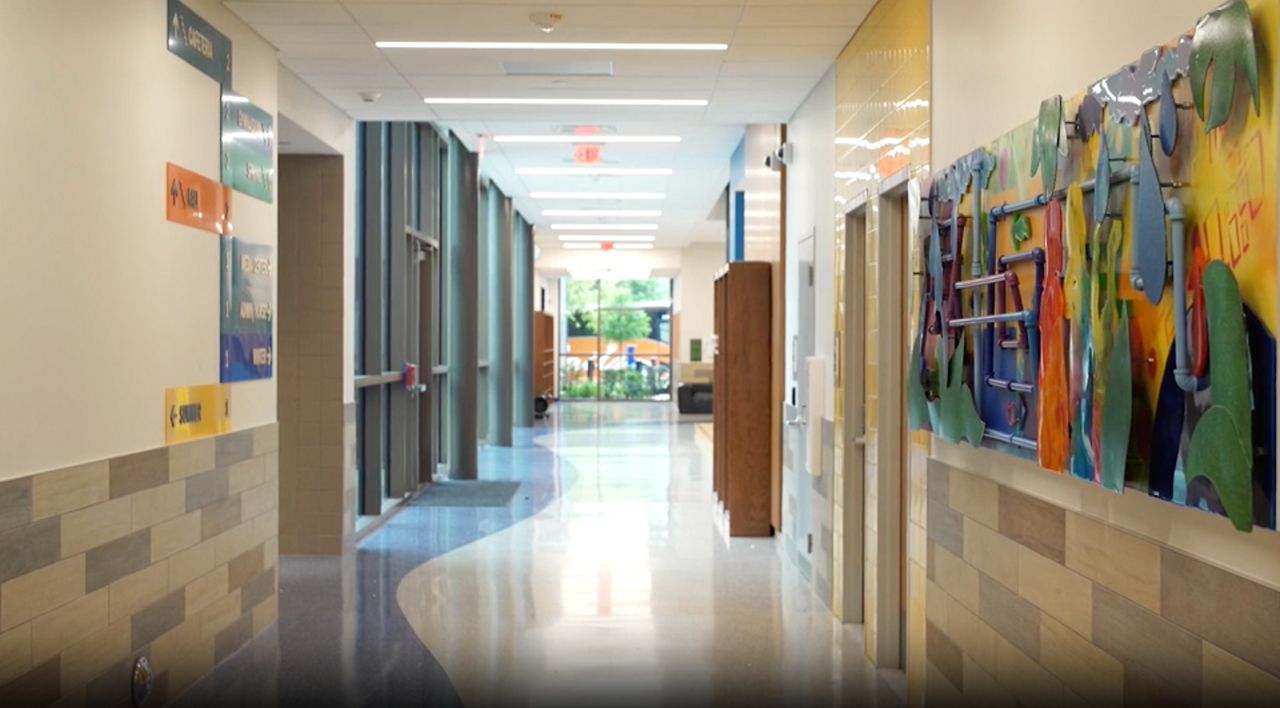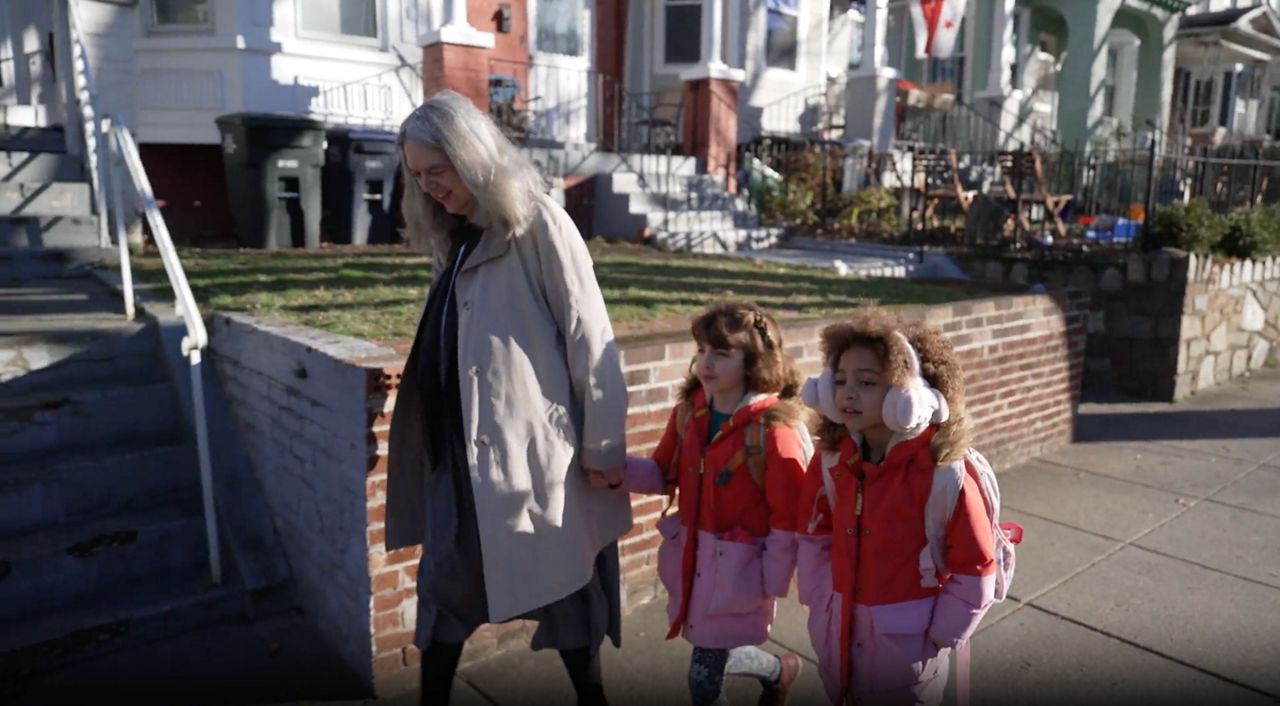Most people spend their waking and sleeping hours inside a building, but rarely do we think about whether that building promotes good health or is making people sick. This disconnect may be most stark when looking at the nation’s school building infrastructure. In Part 2 of her latest Exploring Your Health episode, National Health Reporter Erin Billups takes a closer look at the importance of modernizing the nation’s school infrastructure.
What You Need To Know
- Underinvestment has created a crisis that's affecting the health of U.S. school buildings
- Parents and advocates have pushed for federal funding and oversight of school infrastructure projects
- Studies have shown that improving the health of classrooms can improve test scores
“The energy you feel, the lighting that you feel in the building,” said Nikeysha Jackson, principal of John Lewis Elementary School in Washington D.C. The school reopened in 2021 after extensive renovations. It is one of the latest schools in the District of Columbia Public School system to be modernized.
“Our kiddos, when they walk in, the first thing that hits them when they enter the building, being an open space or indoor tree house, the lights, the books. It just feels like a great, fun place to learn,” said Jackson.
The modernization of DC schools is an ongoing effort, with more than half of the district’s 117 schools updated over the past three decades.
“Every project strove to create a better, healthier, more sustainable learning environment. And that, in many ways culminated with the building that we're standing in right now,” said Sean O'Donnell of Perkins Eastman Architects.
Heather Jauregui, another architect with Perkins Eastman, said a healthier structure was their focus, from filtered water fountains to bringing in more light.

“It connects you to our circadian rhythm. So, you know, access to natural light throughout the course of the day can help you sleep better at night, can help you focus better during the day,” said Jauregui. “There's been research that shows that access to daylight improves test scores.”
While the building was designed before the pandemic, fresh air was also a major focus. “As CO2 levels rise in a space, cognitive function takes a direct decline,” said Jauregui. “This school has better air quality than almost any other school in the DC portfolio solely because we're pumping more fresh air through it.”
Another feature setting John Lewis Elementary apart is the acoustic control. Felt panels hang throughout the building.
“The majority of classrooms in the United States were designed without any kind of expertise or input around acoustics, and that means that teachers miss an average of two days a year because of vocal strain. That means that students, particularly, if they are hearing impaired, have a much harder time hearing their teachers,” said Rachel Hodgdon. “So those are kids who oftentimes, get lost in the system. They fall behind and they can't catch up.”
Hodgdon is the CEO of the International Well Building Institute. She said Washington DC is an example of a city that has had its fair share of financial turmoil, but even in the midst of uncertainty big changes were made to improve schools.
“What D.C. has is a level of awareness, a level of awareness about the impact that school facilities can have on learning outcomes. They're motivated to provide better facilities for their students, and that awareness dates back to parent advocacy,” said Hodgdon, pointing to the work of school advocate and executive director of the 21st Century School Fund, Mary Filardo.
Filardo recalls what the city was like in the 1980s, when she was working as a home contractor and raising her young children. “The city at the time was heading into federal receivership, because it was broke, it couldn't borrow money to, to fix schools.”
“I was in a family that did construction. I was like, no, you can plan this. You can do it. You can make it happen. This should not be insurmountable,” said Filardo.
It took grassroots advocacy that led to the founding of The 21st Century School Fund. Parents formed other organizations too.
Sheila Carson Carr is another parent advocate active in the modernization planning. “When you come as a block and it's across the city, across demographics, then they pay attention to you. So parents are and can be very crucial to the development of the school buildings in the school and the education that will happen in the city,” said Carson Carr.
Finding the money to do the work took creativity, but the experts say it's a smart investment in the long run. “This whole idea that if we build schools that are healthy and safe and sustainable, that somehow it will cost us more is a total myth. In fact, green schools can save hundreds of thousands of dollars a year on utility and maintenance expenses,” said Hodgdon. “The challenge is upfront investment of capital. Where does it come from?”
Without government funds, these parent advocates found other ways to fund the DC schools modernization plan.
“We did a public private development partnership. So we took a tiny little piece of city land –less than two acres– and divided it in half, and one half of it became a 211 unit apartment building,” said Filardo.

The other half became a school. "It was the first new school in Washington, D.C. in over a generation,” said Filardo. “The notion was that we're going to set a standard. We're going to make people understand that a modern school is something that we're entitled to have in the city.”
Eventually, the D.C. City Council created a funding stream for a continuous modernization plan, a commercial property transfer tax. Each city, state, town is different, but one constant remains; healthy schools help a community thrive.
“Since they've come into the building, enrollment has significantly increased. So this year, I believe it's about 20% higher,” said Jauregui.
Carson Carr and Filardo stress that there is still much work to do to bring true equity to D.C. schools. But they have a road map forward. Filardo has been tapped to help expand the vision nationally.
“We need the whole family at the table. We need the federal, state and local if we're going to address this 85 billion a year gap in school infrastructure spending," said Filardo.
For the first time ever the U.S. Department of Education is establishing a National Center for School Infrastructure. It’s an effort to support states and territories as they work to improve school facilities.
The 21st Century School Fund is the lead organization working on technical assistance to high needs school districts and to the states. The new center will be based at the University of California Berkeley’s Institute for Urban and Regional Development and will be a consortium of several organizations. The focus is data collection to support school modernization efforts across the country.
“This is how many classrooms you know are in poor condition. This is how many bathrooms you know are not working toilets or other kinds of indicators. So the data is really important in order to communicate the problems and then to know really where to target your solutions first,” said Filardo.

While Filardo’s children never got to go to school in the modern healthy buildings she fought for, her grandkids are reaping the benefits. She said it’s a huge relief to see them in healthier school buildings.
“It doesn't matter your neighborhood. You are entitled to a modern, school building that's healthy, that's safe, that's good. You know, I mean, educationally inspiring. I don't think it should just be adequate. I think it should be inspiring educationally,” said Filardo.
A hard-fought journey for healthier buildings, that hopefully more kids across the country will benefit from.


